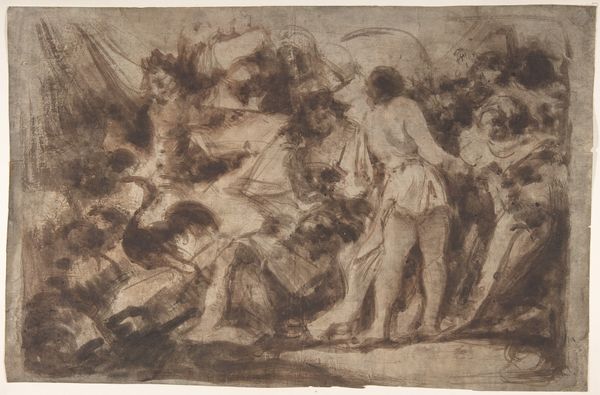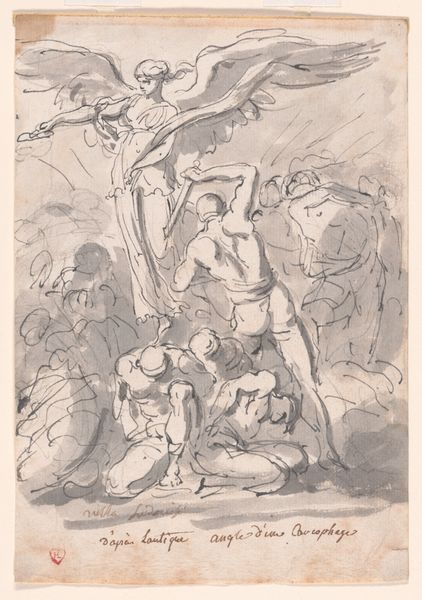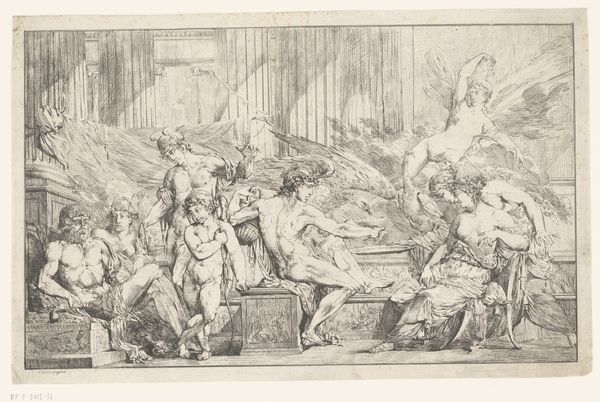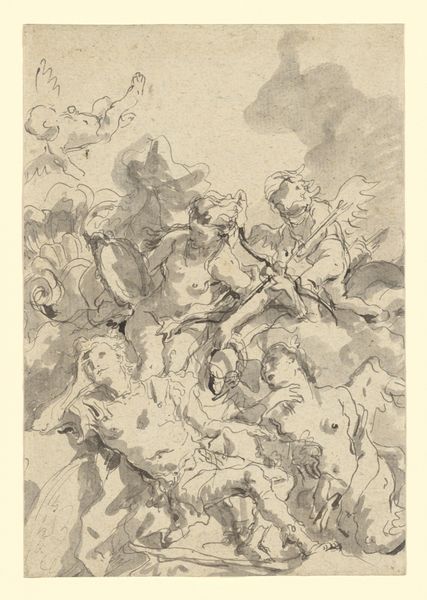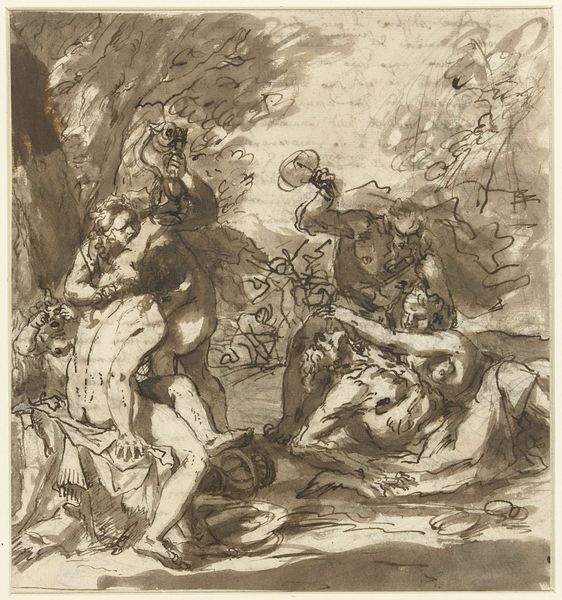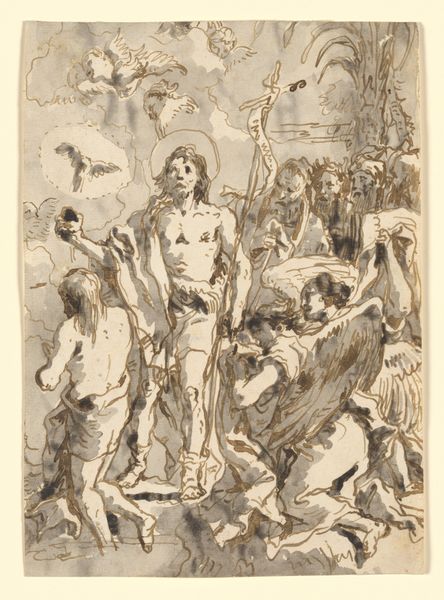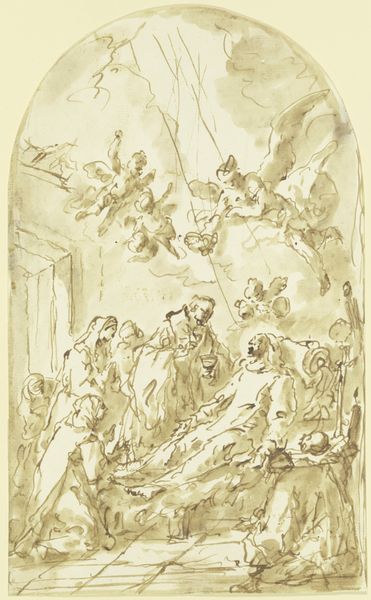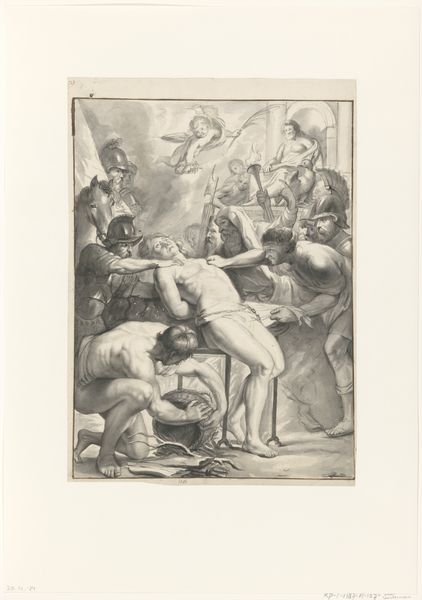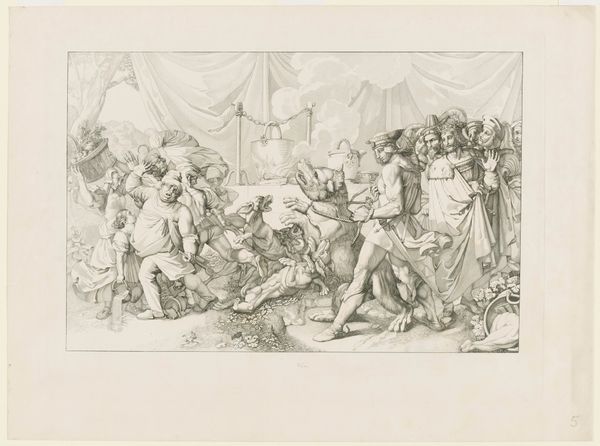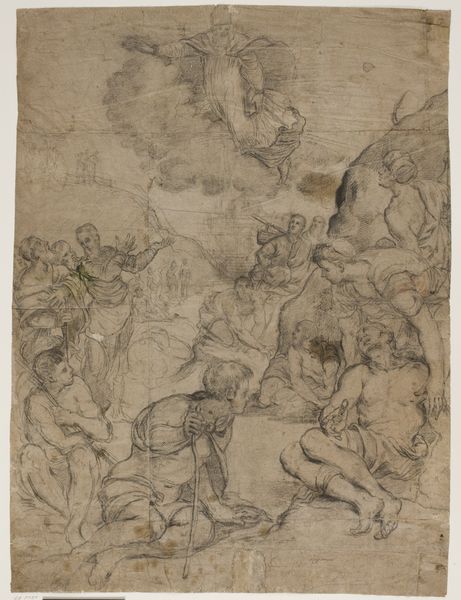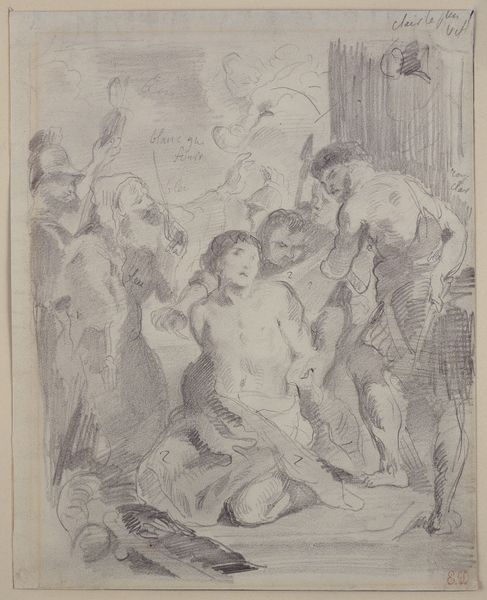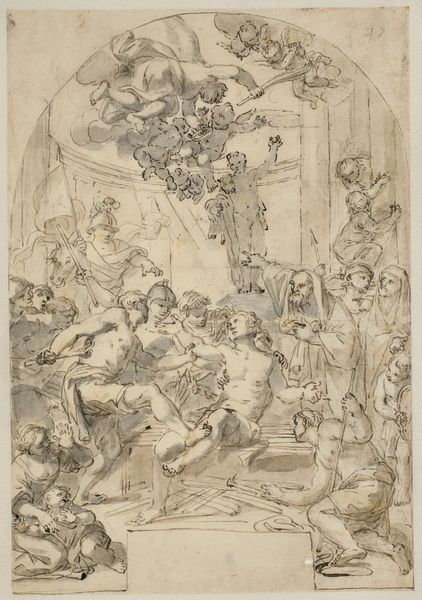
The Baptism of Christ (with Three Angels Attending Him) 1767 - 1793
0:00
0:00
Dimensions: 11 1/8 x 7 5/8 in. (28.3 x 19.4 cm)
Copyright: Public Domain
Curator: Let's take a look at Giovanni Domenico Tiepolo's "The Baptism of Christ (with Three Angels Attending Him)," created sometime between 1767 and 1793. It’s a striking pen, ink, and watercolor drawing. What's your initial response to it? Editor: It strikes me as quite ethereal. The monochromatic palette and the dynamic linework create a sense of movement, like we’re witnessing a fleeting moment caught in time. Curator: Absolutely. It's important to consider Tiepolo's sociopolitical milieu. Religious scenes were being reimagined, and here we see John the Baptist depicted with such delicate attentiveness and agency at a moment where people start asking questions of the old regimes. It's more than a simple biblical illustration; it is the introduction of social and personal inquiry. Editor: That’s interesting. My eyes are immediately drawn to the symbols – the dove representing the Holy Spirit, the cross and banner behind the crowd… How would these have resonated with contemporary viewers? Was this scene a popular one for art in that period? Curator: Very popular. Tiepolo here grapples with this visual language, creating the scene in almost sketch-like fashion, indicating a turning point in his cultural memory; his understanding is still rooted in it but starts exploring his artistic choices further. The Baptism itself is loaded, and that is before the perspective from the attendant angels is added. Editor: Those figures, in their active attention to Christ, do add a layer of emotional complexity to the overall feeling, though it appears that their presence could be considered a subtle interpretation of scripture. Are there historical theories of baptism which are suggested here? Curator: One could say that the figures echo shifting notions of individual salvation, ideas stirring across Europe and taking different forms from pietism to enlightenment rationalism, that is true. Tiepolo brings a subtle ambiguity which leaves it for each viewer to decide for themselves, an emerging form of individual, intersectional liberation in thought, which adds to his progressive depiction. Editor: Thank you; seeing these connections enhances my experience, allowing me to connect to its broader implications. Curator: Agreed. Seeing Tiepolo's artwork really reminds me how important it is to engage not just with the visuals but the history surrounding such significant images.
Comments
No comments
Be the first to comment and join the conversation on the ultimate creative platform.
